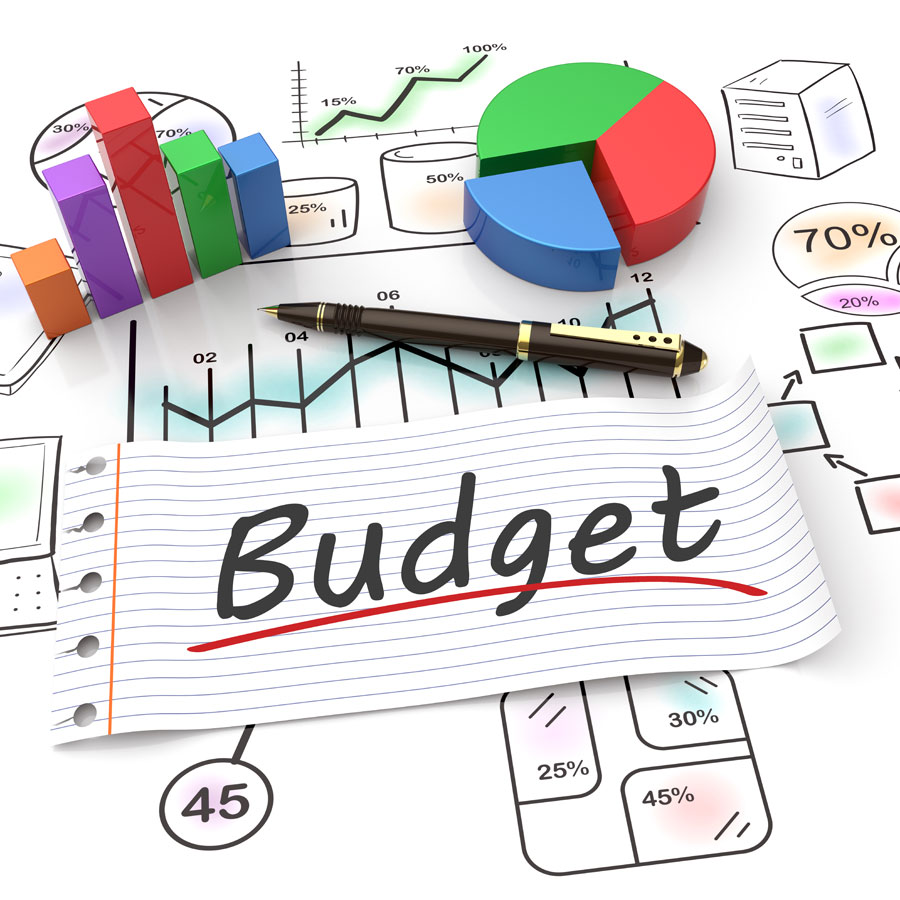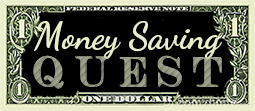
Overview
A budget is an “itemized summary of expected income and expenses for a certain period of time“. The most common time frame is monthly. A budget allows you to see your whole financial picture and gain visibility into your spending habits, making it easier to identify where improvements are needed. Budgeting puts you in the driver’s seat, as you know exactly where your money is going. It is an invaluable financial tool to have on your money saving quest.
What To Include On Your Budget
- Income
- All of the money you have coming in
- Wages from jobs, alimony, child support, etc.
- Your final take-home pay (amount earned after taxes) is called net income, and that is the number you should use when creating a budget
- For irregular income (like freelancing), use an average of the last several months to get a rough idea of the amount to use
- All of the money you have coming in
- Monthly Expenses
- All of the expected expenses you plan on incurring over the course of a month
- Credit card and bank statements are a good place to start to find this information
- Look back at the past three months of transactions and take an average (take the total of the 3 months and divide by 3) in each category to set accurate spending targets
- Example categories to include: Car payments, Childcare, Groceries, Insurance, Utilities, etc.
- Fixed Expenses (have a set cost that stays the same from month to month; nonnegotiable expenses that you have to pay each month; “set in stone” expenses)
- Mortgage payments, car payments, insurance payments, minimum credit card payments, etc.
- For a list of common bills, check out this post on Lifehacker
- Ideally, the total number shouldn’t exceed more than 50 percent of your take-home pay
- Flexible (Variable) Expenses (change month to month)
- Groceries, gas, entertainment, electricity, etc.
- Financial Goals
- Make sure to set aside some money every month for goals that are important to you
- Examples: Building an emergency fund, paying off credit card debt, saving for a house down payment, etc.
- Make sure to set aside some money every month for goals that are important to you
- Be sure to KISS
- All you really need to do is list your income and expenses
- All you really need to do is list your income and expenses
Next Steps / Initial Findings / Monitoring
- Subtract your total expenses from your total income
- If you end up with a positive number (more income than expenses), you’re in great shape!
- You can prioritize this excess amount to certain areas of your budget like paying more on a credit card or retirement savings
- If you end up with a negative number, be sure to start cutting down on your variable (discretionary) expenses first
- Check for “spending leaks” like overlapping entertainment accounts
- The ultimate goal is to have all your income accounted for and budgeted for a specific expense or savings goal
- If you end up with a positive number (more income than expenses), you’re in great shape!
- Review on a regular basis to stay on track → → → *Adjust as necessary*
- After the first month, take some time to sit down and compare your actual expenses vs. what you had created in the budget
- Make sure to update each month (after the initial set-up, it should take very little time each month to update). Your budget needs to be flexible for anticipated and fluctuating expenses that vary from month to month.
- Watch your spending limits → if it’s mid-month and you’re already reaching a limit in a certain category, be sure to slow down your spending for the rest of the month
- Reviewing your budget regularly will show you where you need improvement and where you’re doing well
- Adopt habits that will keep you on track and in control
- After the first month, take some time to sit down and compare your actual expenses vs. what you had created in the budget
- Other guidelines to follow
- Your total debt payments should take up no more than 36% of your monthly income
- A debt-to-income ratio calculator can help assess your personal debt ratio
- Credit card debt payments should take up no more than 10% of your monthly income
- However, if you have extra cash flow then consider spending more than the monthly required payment
- Savings should be a budgeted fixed expense
- Plan to set aside 5-10% of your income per month and consider setting up automatic contributions to your savings account
- Your total debt payments should take up no more than 36% of your monthly income
Tools To Use
*Be sure to use the tools or platforms that you are most comfortable with*
- A piece of paper and pencil is all you need a minimum.
- Excel spreadsheets
Helpful applications:
⇒ Clarity Money
- Gives you the full picture of what’s happening between all of your financial accounts
- Analyzes and uses your spending history to provide budgetary insights
⇒ EveryDollar
- Very intuitive and user-friendly
- Helps you track your budget on the go
- The main budgeting app is free

⇒ GoodBudget
- Based on the envelope budgeting method (virtual envelope system)
- Lets you roll over any unused cash to the next month’s envelope
- Doesn’t require you to sync up your financial accounts
- Free version available
Mint
- A FREE go-to budgeting app for many
- Very easy to use
- Sync as many accounts as you want and make as many budgets as you want
- Create budgets, set goals, monitor spending, view transactions, and review vital spending information in easy to use breakdowns and charts
- Many ads and offers make the app feel cluttered

MVelopes
- Digital budget by envelope method
- Label envelopes by expense category and store cash in each
- You can earmark cash to an envelope up to a year in advance
- Free trial version comes with 25 envelopes and up to 4 accounts linked

Tiller
- Automatic daily feed of bank transactions and balances into a Google Sheet template
- Endless customization
![]()
You Need a Budget (YNAB)
- “Give every dollar a job” in depth deep dive
- Eliminate paycheck to paycheck cycle
- YNAB offers live online workshops on financial management
- Connect to income and spending accounts or enter manually or download and import
Other apps to consider: Honeyfi, Buxfer, Spendee, PocketGuard
Budgeting Styles
⇒ The 50/20/30 Rule

The 50/20/30 method is a great starting point for those who like structure or those who are simply new to budgeting.
You allocate 50 percent of your take-home income for fixed expenses (rent, utilities, groceries, minimum debt payments, etc.), 20 percent for financial goals and 30 percent for variable expenses + wants (like food delivery, a Netflix subscription and travel). This keeps your personal finances simple so you can pay your bills, add to your savings, and have the freedom to use some money just for fun.
⇒ The Envelope System

Cash is allocated into separate envelopes dedicated to different day-to-day spending categories of household expenses (gas, food, etc.), Once the money is gone, it’s gone.
⇒ Zero Based Budget
A zero-based budget is one where your total income minus your total expenses equals $0. So if you earn $3,000 a month, you want everything you spend, save, give or invest to all add up to $3,000.
Proponents of the zero-based budget believe that spending your whole paycheck every month is a good thing.
Unlike other budgets, it doesn’t require you to restrict your spending. Instead, it encourages you to zero out your balance every month and assign every dollar of income to an expense (or savings category). Every dollar has a name or purpose in this budgeting style.
Budgeting Templates / Worksheets To Get You Started
⇒ Kiplinger Household Budget Worksheet
⇒ Free Budget Templates From Mint.com
